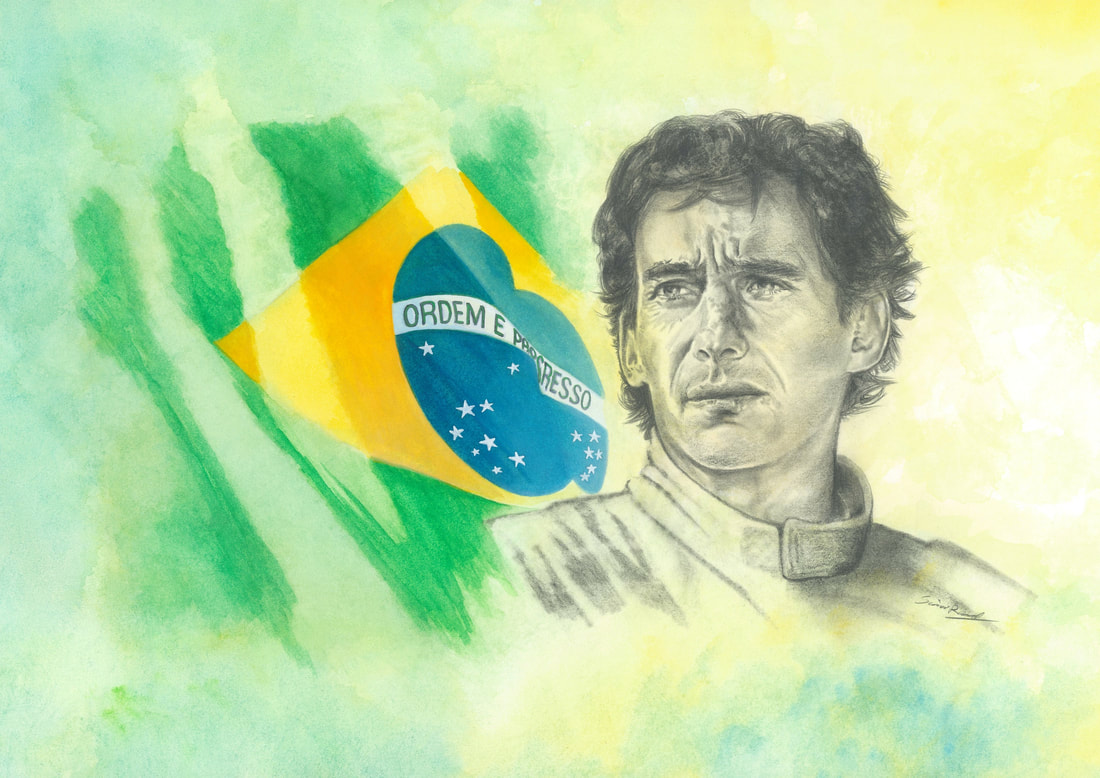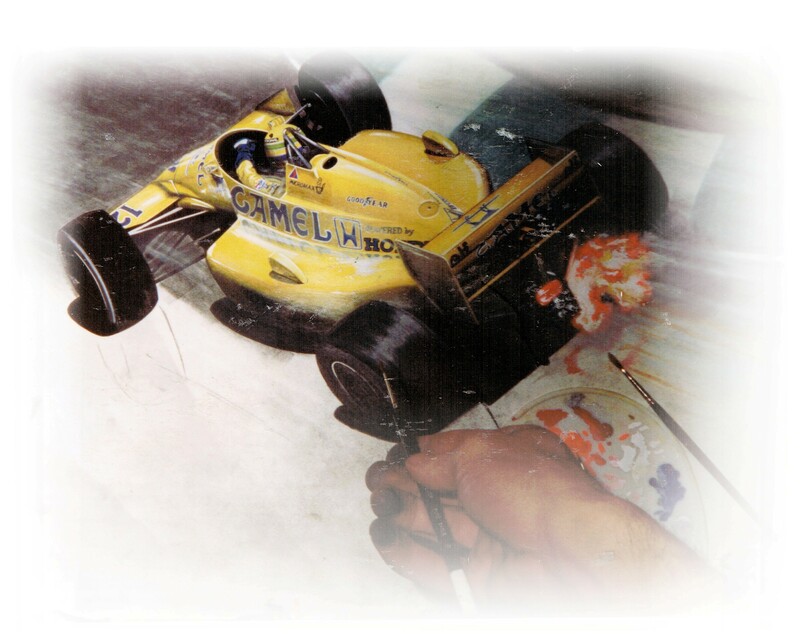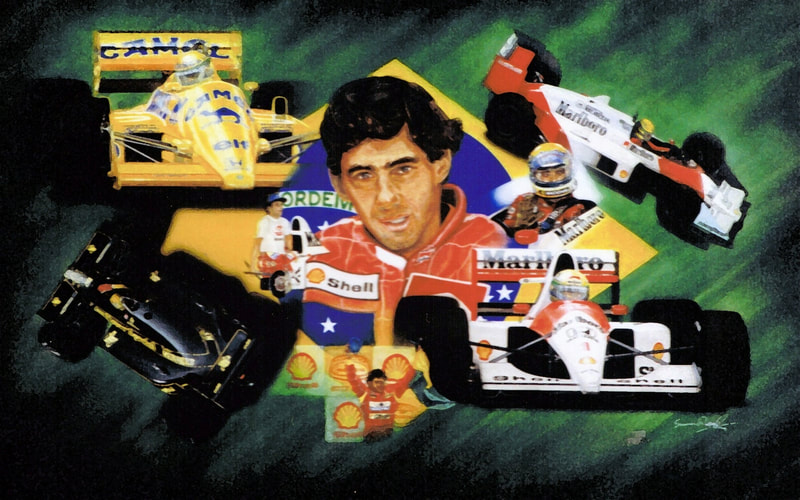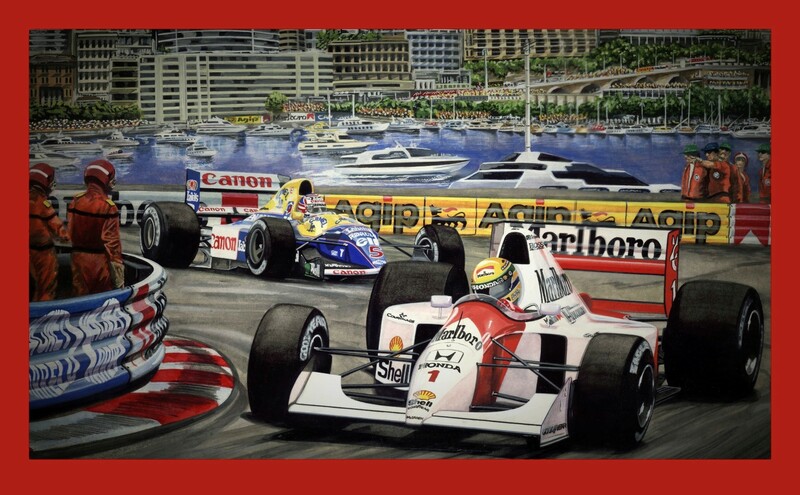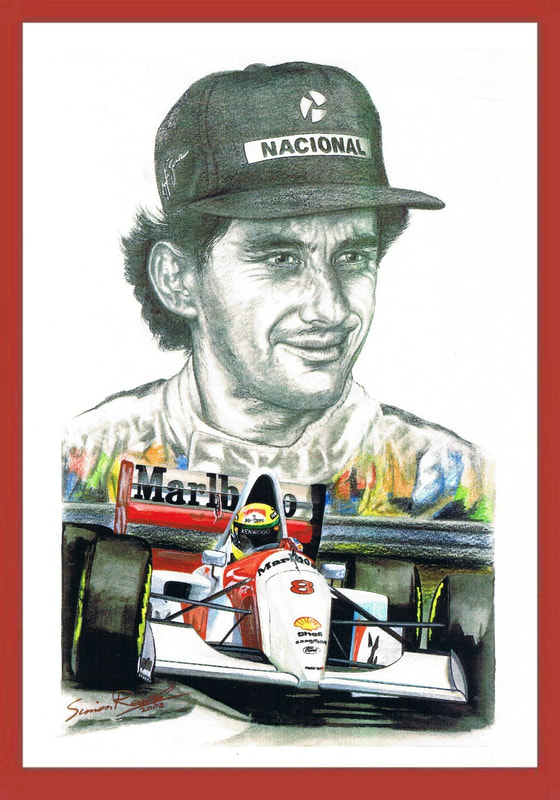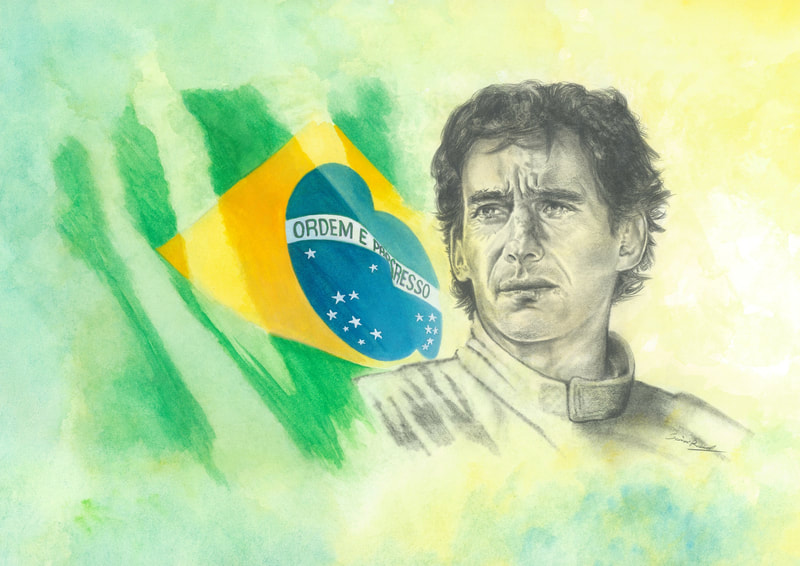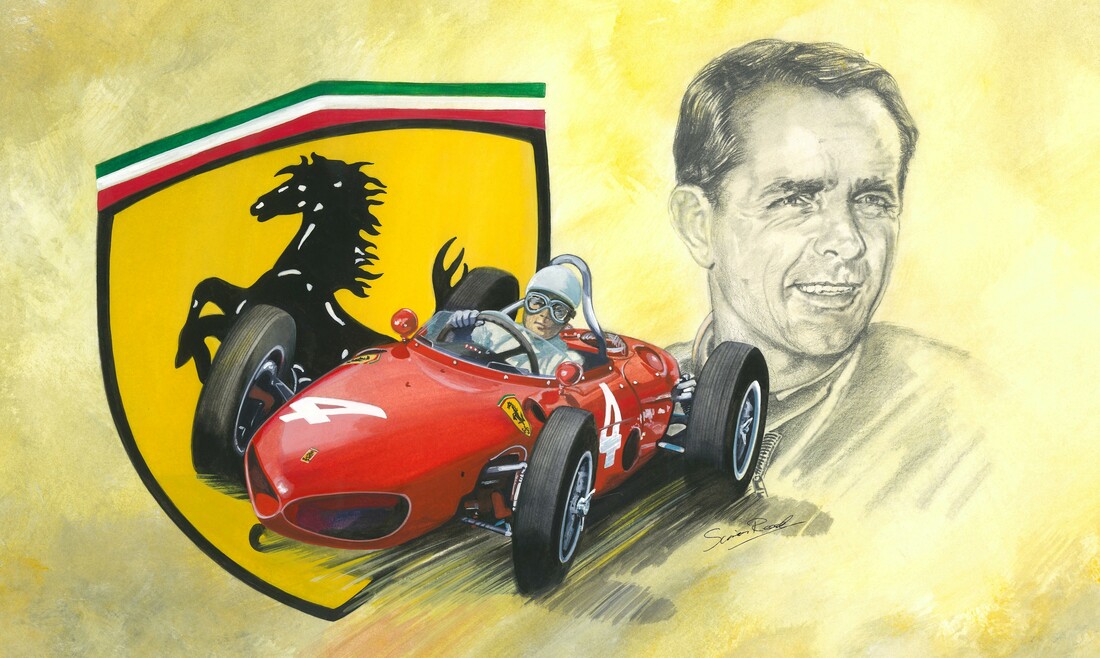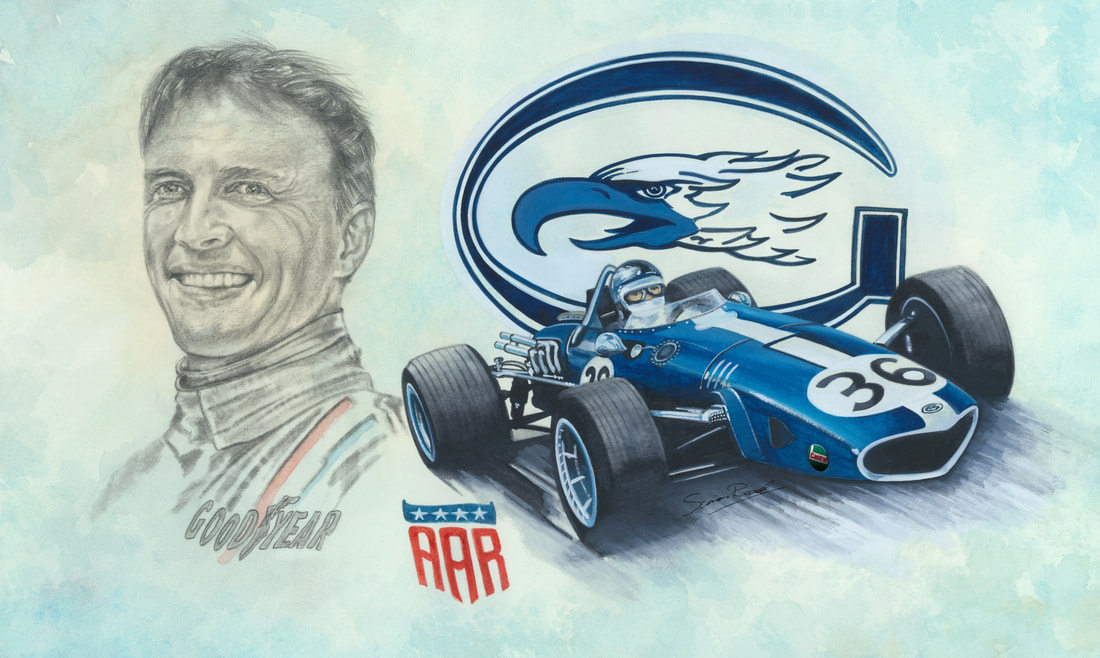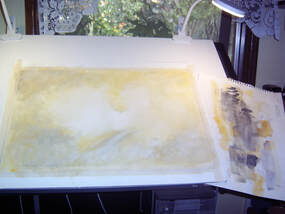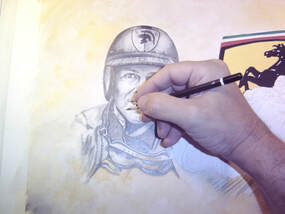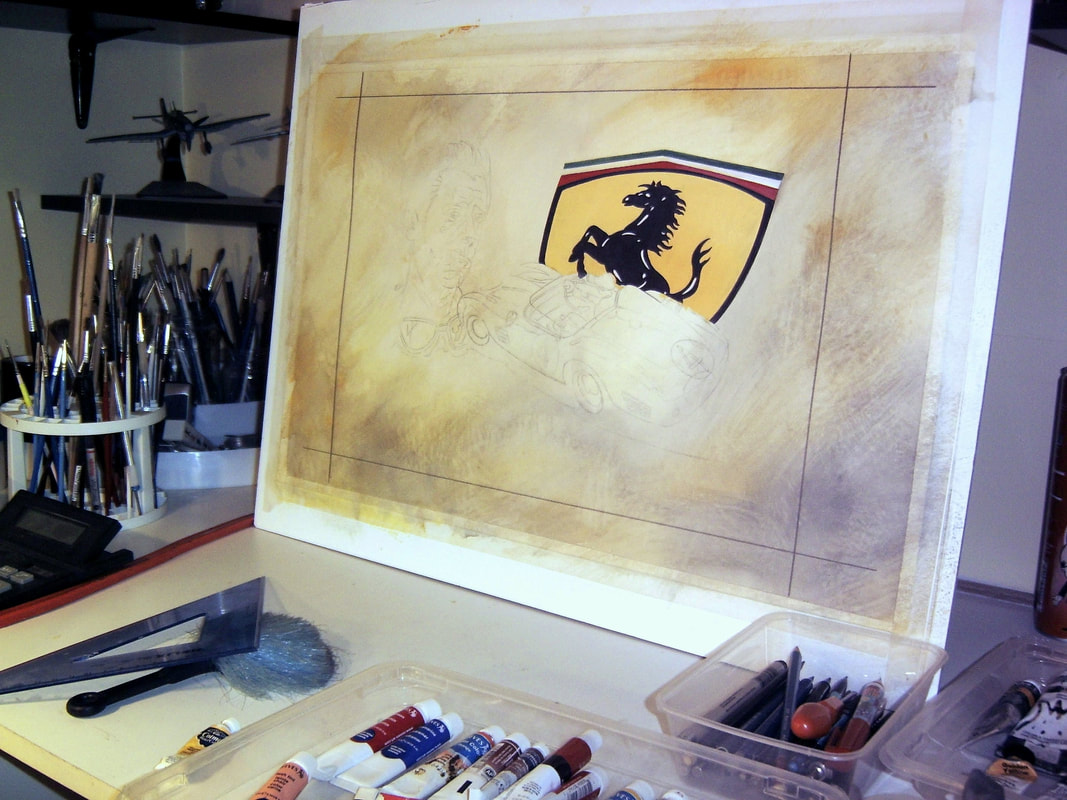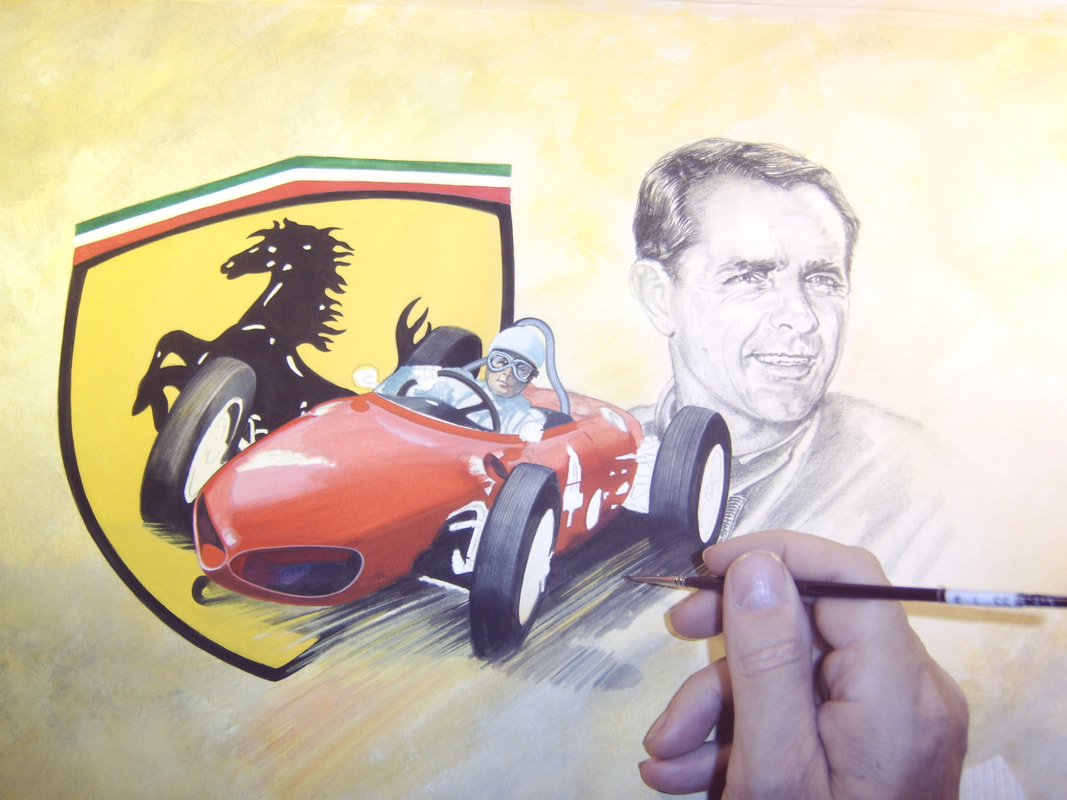|
Saudade - Portuguese expression for those feelings of longing, immortalised in Chris Rea's tribute to Ayrton Senna. Senna's intensity and passion for life and competition were immediately apparent, a physical presence, for every one of us fortunate enough to actually meet him. From the earliest F1 days with Toleman and then Peter Warr's Lotus, through the McLaren years, then the move to Williams and that dark day in May 1994. My late brother Steve had many of my original signed Ayrton Senna sketches. I think he would have liked this painting and it is dedicated to his memory as well...
1 Comment
As I completed this recent painting of Phil Hill, for my Ferrari Legends series, he put me in mind of other great American Motorsport Champions of the period. Several great competitors, engineers and innovators actually shaped many of the machines and events we enjoy today. Dan Gurney was one of the greatest, a man whose lifetime of accomplishment left an indelible mark on motorsport and a deep impression on so many lives around the World. I composed this as a companion piece to Phil Hill and there are several others that spring to mind too! Therefore; expect further updates here as the 'American Eagles' series continues to grow...
The Tangible Artist We all do digital art, every modern artist today does it. We all have digital cameras, i-phones or androids, PCs or MACs. We all source material online as well. Most artists today use these tools to assist in creating layouts and composing aesthetically pleasing compositions. For an artist like myself, interested in technical and historic subjects, this kind of research is the way most projects begin and it sure beats cutting up magazines and hand sorting research material, photos and sketches all over the studio floor, which is what we did in the old days. Having worked out your subject, proportions, details and layers, why even paint the thing physically? Why not leave it in this format and continue to polish the work to completion as a digital piece alone? Lots of people do just this, with great results, illustrating that the digital art revolution is well established. However, the Tangible Artist, the artist who makes a piece you can hold and touch, knows more about the value of hand made art, spontaneity and the skill of the live performer. Following the initial layout and visualisation it is important, for the Tangible Artist, to put them aside in order to connect with real materials, individual hand/eye skills and the unique interpretation that results. Ask any number of people to hand copy part of a reference photo using a pencil, for example, and you will be surprised by how difficult that is and the variety of results! While anyone may reproduce a series of keystrokes to create a given effect, even the same artist cannot draw exactly the same thing twice! Pencils, inks and paints are organic. They depend completely on the artist's eye, steady hand, choice of materials and technique. The Tangible Artist selects a particular canvas or paper, weight and texture, based on their preferences and physical experience. Suitable paints, their opacity, translucence, coverage and quality. How shall you apply the material? What tools will you use? Brushes, sponges, palette knives, putty, each must be held and weighed. I can type this article with one finger and edit retrospectively as I go. PC's have made many things so much easier. But when you apply wet paint to a surface the game is on! You have to stay with it for a time and work the media. Because paint doesn't dry right away and it changes appearance as it soaks in. The hue and textures shift in relationship to everything else on the same surface. There is no pause button. There is no CTRL-Z or Undo.
This is, I suppose, a question of taste and interpretation. Analogous to music for example; there is much superbly produced material made largely on computers alone - but to see a human being sitting a few feet from you, expertly play a real instrument alive in that moment, is magic. You can't quantify it, but those who know what they are hearing, or looking at, know the difference. Thanks to the online revolution and digital printing we can all enjoy the results of this work in whatever form we choose. The Tangible Artist also strives to preserve as much of that 'live' element, and spontaneity, as possible. |
